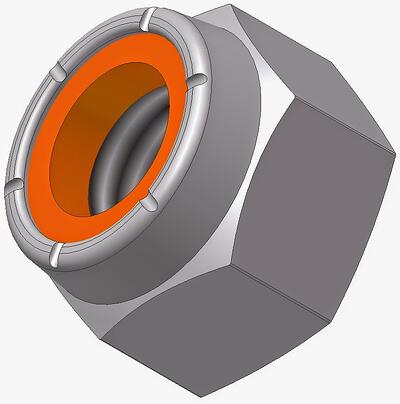There are several characteristics of prevailing torque locknuts that should be included in a complete specification. For many of these characteristics, it is equally important to define how the characteristic is measured. National and international standards are good examples of complete definitions, and whenever possible should be referenced or mimicked when specifying these parts for the following reasons:
- Compatibility with standard mating parts
- Predictable performance
- Generally more available and less expensive
A complete prevailing torque locknut specification will include the following characteristics:
- Threads
- thread form
- nominal diameter
- thread pitch
- clearance class or special minor diameter and pitch diameter
- go-gauge insertion minimum prior to encountering the prevailing torque element
- Material (chemical composition)
- Dimensions
- Wrenching Dimensions
- Configuration (Square, Hex, etc.)
- Width Across Flats
- Width Across Corners
- Wrenching Height
- Bearing Dimensions
- Bearing Circle Diameter
- Thread Countersink Diameter
- Flange Thickness (if applicable)
- Perpendicularity of the Thread Axis to the Bearing Surface
- Concentricity of the Thread Axis to the Bearing Surface
- Envelope Dimensions
- Overall Thickness
- Flange Diameter
- Wrenching Dimensions
- Finish (coating or plating)
- Mechanical Performance
- Through Hardness
- Load Capacity (Proof Load)
- Prevailing Torque
- Installation Maximum
- Removal Minimum
Sometimes additional characteristics should be specified, depending on the application:
- Torque vs. Tension
- Breakaway Torque
- Vibration
- Performance at Temperature
Each of these characteristics can be associated directly to functionality in an application, and inspecting them can be helpful in qualifying parts as acceptable. There are risks and costs associated with specifying characteristics that are not listed above, or not specifying any of those that are listed above.







